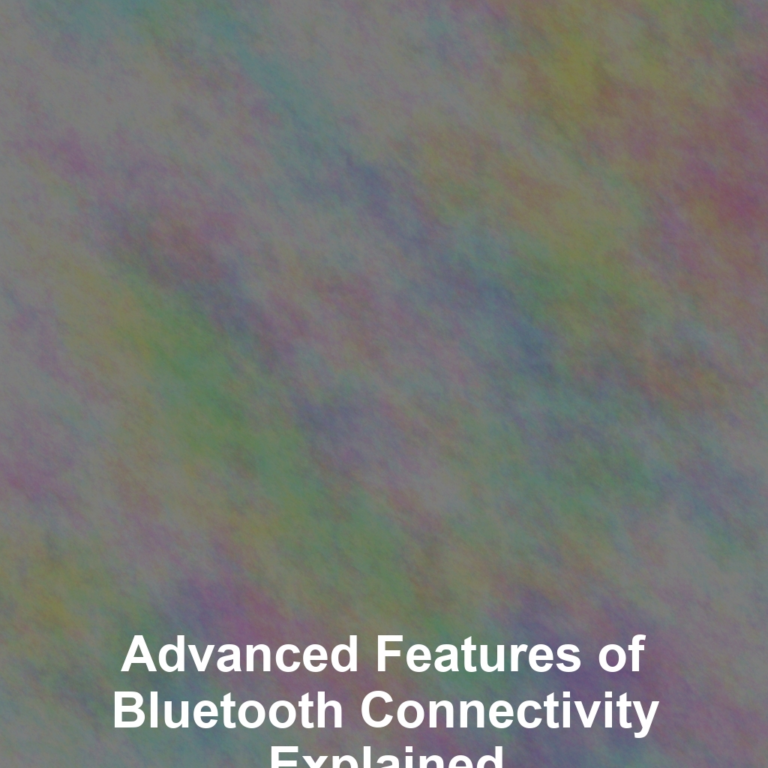Ah, Bluetooth connectivity, the modern-day equivalent of trying to solve a RubikG??s cube in the dark. YouG??ve probably found yourself in the midst of the seemingly simple task of pairing devices, only to be met with the enigma of unrequited wireless signals.
As a technology thatG??s supposed to seamlessly integrate into our daily lives, the varying user experiences suggest a tapestry of satisfaction and frustration. While some sing praises of audio quality that rivals wired connections, others recount tales of battery life that seemingly evaporates faster than a puddle in the desert.
YouG??ve likely encountered the full spectrumG??from impeccable range to the dreaded G??device not foundG?? messageG??raising the question: how consistent is Bluetooth technology really? Join this balanced discourse on the diverse user reviews and ratings, and uncover the factors that can make or break your wireless experience, because letG??s face it, youG??re probably not looking forward to the next G??pairing failedG?? adventure.
The Pairing Challenge
Navigating the intricacies of Bluetooth pairing can often turn into a perplexing endeavor, with users frequently facing hurdles that interrupt a seamless connection process. YouG??ve likely been there, tapping away at your device, trying to get your earbuds, speaker, or smartwatch to sync. ItG??s supposed to be straightforward, but itG??s not unheard of for you to end up scratching your head, wondering why itG??s just not connecting.
YouG??ve read the manual, followed the steps, and still, the device youG??re trying to pair with doesnG??t show up on the list. Or maybe it does, but when you select it, nothing happens. ItG??s frustrating when the promise of quick and easy connectivity falls short. YouG??re not alone in this; user reviews are teeming with similar stories of pairing woes.
To make matters worse, if you do manage to pair the devices, keeping them connected is another battle. You might find your music randomly stops playing, or your call gets disconnected from your headset. ItG??s disruptive, especially when manufacturers tout the reliability of their Bluetooth technology. These issues cast a shadow on user satisfaction, as reflected in the mixed reviews and ratings you come across. The challenge isnG??t just pairing; itG??s maintaining a connection that doesnG??t test your patience.
Audio Quality Feedback
Once youG??ve managed to conquer the pairing battle, the next hurdle you often face is the audio quality that can either enhance or diminish your overall Bluetooth experience. ItG??s no secret that youG??re after crystal-clear sound, whether youG??re streaming your favorite tunes, taking calls, or catching up on podcasts.
YouG??ve probably noticed that audio quality can vary wildly from one Bluetooth device to another. Some users report rich, full-bodied sound that rivals wired connections, while others lament over tinny echoes and frustrating interference that can ruin a good jam session. ItG??s not just about the earbuds or speakers themselves; the Bluetooth codecG??like aptX, AAC, or LDACG??plays a crucial role in what you hear.
DonG??t overlook the reviews that dive into these details. TheyG??ll tell you if thereG??s a noticeable lag between video and audio when youG??re watching movies or if the sound cuts out if you wander a few feet away from your phone. Remember, good audio quality shouldnG??t be a gamble. ItG??s worth seeking out devices that consistently receive high marks for their sound. After all, whatG??s the point of wireless freedom if it doesnG??t sound great?
Battery Life Experiences
Shifting gears, letG??s examine how battery life can make or break your wireless listening experience. YouG??ve probably been there: youG??re enjoying your favorite tunes or youG??re in the middle of an important call, and suddenly, your device emits that dreaded low-battery warning. ItG??s frustrating, isnG??t it? Well, youG??re not alone. Users frequently cite battery life as a critical factor when reviewing Bluetooth devices.
HereG??s a breakdown of what you should look for to avoid being tethered to a charger:
-
Longevity: Aim for devices that offer at least 8-10 hours of battery life. This should get you through a full day of use without reaching for the power cord.
-
Fast Charging: Some devices now come with fast charging capabilities, giving you hours of use with just a few minutes of charging time. ItG??s a lifesaver when youG??re in a pinch.
-
Battery Indicators: Look for Bluetooth devices with clear battery level indicators. Knowing exactly how much juice youG??ve got left can help you plan your usage and avoid unexpected shutdowns.
Range and Connectivity Issues
Despite your Bluetooth deviceG??s battery being fully charged, you might still encounter interruptions due to range and connectivity issues. You know the drill: youG??re grooving to your favorite tune or in the middle of an important call when suddenly, the audio cuts out or becomes distorted. ItG??s frustrating, isnG??t it? These interruptions are often due to your device straying too far from the source or encountering physical barriers like walls and doors.
YouG??ve probably noticed that manufacturers tout impressive range capabilities, but in reality, you find the effective range to be much less. Users frequently report that the promised 30 feet is more like 10 in a typical home or office setting. This can be especially bothersome if youG??re using Bluetooth for home audio setups or outdoor activities.
Moreover, the presence of other wireless devices can interfere with your Bluetooth connection. Wi-Fi routers, microwaves, and other Bluetooth gadgets can crowd the airwaves, causing your connection to stutter or disconnect. YouG??re not alone in experiencing these hiccups; reviews are riddled with similar complaints.
To sum it up, while Bluetooth technology offers a convenient wire-free experience, you must remain aware of its limitations. Staying within a clear line of sight to your paired device and minimizing interference helps, but doesnG??t always guarantee a flawless connection. Keep this in mind when reading those glowing product reviews.
Device Compatibility Insights
Moving beyond range limitations, itG??s essential to consider how well your Bluetooth device plays with others, specifically the compatibility with various operating systems and gadgets you own. YouG??ve likely experienced the frustration when a device claims to be universally compatible, only to find it stubbornly refuses to connect with your go-to gadgets.
HereG??s how you can ensure a smoother experience:
-
Check for Compatibility Lists: Before you buy, scour the manufacturerG??s website for a compatibility list. ItG??s your first line of defense against purchasing a device that wonG??t work with your existing tech.
-
Update Your Software: Keeping your devicesG?? software up to date can significantly improve Bluetooth compatibility. Manufacturers often release updates to fix connectivity issues that users like you have flagged.
-
Look for Multipoint Pairing: If you juggle multiple devices, find a Bluetooth gadget that offers multipoint pairing. This feature allows you to connect to several devices simultaneously, switching between them as needed without the hassle of repairing.
Conclusion
YouG??ve seen the highs and lows of Bluetooth connectivity. Pairing can be a hassle, but once connected, the audio quality often impresses. You appreciate the long battery life, though range and connectivity may sometimes frustrate you.
Device compatibility is key; ensuring your gadgets play nice makes all the difference. Remember, your experience hinges on the quality of your devices, so choose wisely and enjoy the wireless freedom Bluetooth offers.
Keep sharing your stories; they guide future improvements!











